Pilates: perfect abs and beautiful posture. Pilates for beginners at home Pilates for beginners 15 minutes for weight loss
Joseph Pilates gave us unique method, which allows you to keep your body in shape without mind-blowing loads. If you decide to go in for sports, but you have little time and physical training small - this material is for you. Start getting to know your body with Pilates: give up extra pounds, correct your posture and strengthen your muscle frame.
In the article we will talk about the technical features of the method and show the main complexes for beginners. Once you get to know Pilates, you will definitely want to try the technique for yourself. Don't hesitate, start exercising today, because these exercises do not require any special equipment.
Home PilatesWhy is it worth looking at?
- Pilates is aesthetically pleasing and feminine, which is reflected both in the process and in the result.
- A useful point is the complexity of training. In an hour, you can work out all the muscles from superficial to deep, and at the same time.
- Despite the seeming ease of performing exercises, Pilates - power training strengthening muscles. He works on both external and internal muscles a person who “hold” the organs, joints and help to move.
- Pilates is mindfulness training. All of his techniques are based on understanding when which muscle works and by what percentage. Constant concentration dispels thoughts about everyday problems and difficulties at work.
- Special stretch! By default, we stretch the muscles during exercise, because all strength work goes through stretching.
- Pilates develops flexibility, improves control of movements in life.
- A huge advantage: in Pilates, the level of training is not important.
If you still don't have enough reason to get up and start exercising, which would be extremely surprising, here are seven more benefits of Pilates:
Pilates at home- Preparation
Let's start with the basics. Before each Pilates workout, we devote 5-7 minutes to breathing and the main stance:
Main rack
Stand straight, spread your legs shoulder-width apart, bend your knees slightly, bring your pelvis forward and slightly pull in your stomach. Squeeze your shoulder blades and stretch your crown up, while not stretching your chin or lifting your shoulders. Relax your arms along your body. In the main stance, the body should be fully extended, the lower back should be flat. From this position, allpilates exercises for beginners. When exercising on the floor, fully press your lower back to the floor.
Breath
We always breathe not with the stomach, but with the chest. The lungs should fill and empty as much as possible, breathe slowly and calmly. If you breathe correctly, then when you inhale, you will feel that your back is swelling. Thanks to this breathing technique, the flow of oxygen increases and the metabolism accelerates.
Pilates for beginners at home: the best complexfor all muscle groups
Additional equipment - a "square" chair with a back and stable legs, standing on a non-slip surface. The complex was compiled according to the lessons of Valentina Gernat, instructor of Yogalife.
Chair squats

Reverse chair push-ups

Knee twists

shoulder bridge


Bench

It was an express Pilates complex. For a more thorough study of all muscle groups, seepilates video for beginners at homeand try the workout in action.
Pilates accents on different parts of the body
One of the biggest benefits of Pilates is combating crooked posture. As you already understood, the peculiarity of the technique is the “stretching” of the spine. By strengthening your back muscles, you can easily work out the abs. Therefore, I suggest that you familiarize yourself with the exercises for the upper shoulder girdle WithReemala Pilates & Garuda studio.
Having strengthened your back, proceed to work out the press. About how to reach thin waist and get rid of excess weight read in materialPilates exercises for a flat stomach and abs .
Pilates home workoutswork with the buttocks. Here is an effective ten-minute complex for you. Performing the exercises technically correctly, you will achieve results in the near future:
Shoulder bridge with pelvic lifts and pulses


Leg raise with hip flexion and pulses


Contraindications
Despite the fact that Pilates is considered one of the safest types of physical activity, beginners should exercise some caution, especially if there are chronic diseases or injuries. You should not start classes if you are sick with seasonal viral diseases, let the body recover.
Within 2-3 months after an injury or operation, even a small load is contraindicated, so classes will have to be postponed until complete recovery.
Pilates for beginners- this is a great way not only to work out all muscle groups, but also to restore internal balance. Do not rush to complicate your classes, it is important to thoroughly work out the technique of each exercise. Learnpilates for beginners at home, train regularly, and after 2-3 months you will be able to move to the next level of difficulty, which will be another step towards physical and spiritual improvement!
Pilates is an amazing combination of gymnastics and yoga. Pilates for beginners at home gives results in a short time, this is one of the many advantages of this method over other types of fitness.
Pilates was developed by Joseph Pilates, who, after emigrating to America in 1926, he successfully opened his brainchild to the world. The main difference between the Pilates technique is that the multifid muscles of the spine, the transverse muscles of the abdomen and the pelvic floor are involved, which are most often not involved in training on conventional simulators.
The Pilates technique is suitable for absolutely everyone who wants to be in tune with their own body, move gracefully and beautifully, while using all the possible resources of the body. Also, Pilates is ideal for pregnant women and those who after pregnancy and want to put their body in order.

The main features that you should know if you decide to choose Pilates for beginners at home:
Softness and smoothness of movements;
Proper breathing;
Concentration of attention on the trained complex of muscles;
Regular exercise from your own complex.
Regular Pilates classes at home or in the gym will help you get rid of many diseases, lose weight, strengthen your immune system and general state organism.

The differences between Pilates and other types of fitness are savings:
Time (you can practice Pilates for beginners at home without long and tiring trips to fitness centers and gyms).
Money (no need to buy expensive equipment, and if you study at home, you will also save on buying subscriptions).
There are only three varieties of Pilates, their main difference is the use or lack of equipment.
1) Pilates matwork. Pilates technique without application additional equipment, the only thing you need for training is a non-slip mat.
2) Pilates with small equipment. Small equipment means an expander, fitball, noodle, bodybar, isotonic ring, cylinder. Usually, for this type of Pilates, training is carried out in groups or individually with a trainer.

3) Pilates using large machines. Large simulators include a reformer, a chair, a Cadillac and others. Like the second type of Pilates, this one is carried out in gyms in groups in the presence of a trainer. It is worth noting that maintaining balance when exercising on Pilates simulators is the most difficult and serious nuance, because it is the difficulty in maintaining it that makes it possible to train small muscles.
Pilates is a unique gymnastics performed in just 15 minutes for weight loss, for the back and its recovery, as well as for finding harmony with your own body. Let's look at the main recommendations before starting training complex Pilates at home. It is advisable not to eat an hour before training, you can drink water before training and during it. You need to do it on a mat in a warm, heated room. During training, the muscles warm up and with the slightest draft or exercise on a cold floor, you can easily get sick.
Before starting the main complex, you need to do a little warm-up. During the lesson, move smoothly and easily, slowly and calmly, limit sudden movements. Also, do not forget to monitor your breathing, breathe deeply.
A set of Pilates exercises for beginners at home
Consider the basic exercises, the implementation of which will not take you more than 15 minutes for weight loss and recovery, which are easily performed at home and without preparation, they can be safely called basic in Pilates classes.
Lie on your back on the floor, put your feet on the floor, and your hips need to be bent, while the body should remain on the floor. Tighten your abdominal muscles and relax your arms. Squeeze your buttocks and stomach, and then lift your back off the mat so that you have a stand on your feet and shoulder blades. You, so to speak, rise to the “bridge”, in the peak position you need to spend at least three seconds, then return to the starting position and repeat the exercise four to six times.

Get on all fours, while your shoulders should be above the hand, and above your knees should be hip joints. In this position, it is necessary to straighten the lower back, draw in the stomach, while exhaling, stretch the left arm and right leg to the sides. Slowly return to the starting position, change your leg and arm, repeat the exercise at least ten times, at the end, relax your lower back.

Stand up straight and straighten your shoulders, then try to press the shoulder blades to the spine as much as possible. Gently twist forward, while maintaining a straight posture, and touch your own feet with your fingertips, return to your original straight position. The repetition of the exercise is carried out at least five times.

In order for the result from training, using Pilates for beginners at home, not to take long, you should not forget about the regularity of training, balanced nutrition and water balance.
On the pages of our site, we have already talked about the effectiveness of the Pilates method for losing weight and improving the quality of the body. And now we offer you a unique selection of Pilates exercises for problem areas , which will help you strengthen your muscles, tighten your stomach, improve the shape of your buttocks and legs.
Pilates exercises are especially worth paying attention to for those who, due to problems with joints and blood vessels. Also regular classes Pilates helps to get rid of back problems, straighten the spine, improve posture and strengthen the muscular corset.
Features of performing exercises from Pilates:
- When doing Pilates exercises try to straighten your back, straighten your shoulders and pull them back. We keep the body taut and collected, it should not be relaxed.
- In the plank position, we do not bend, we do not lower and we do not raise the pelvis up. The body should form one straight line.
- When doing Pilates exercises on the back the lower back should not come off the floor and bend, try to press it to the floor. We pull the stomach to the spine, do not relax it.
- During classes, we do not help ourselves with the neck, we work only with the muscles of the core. The back of the head is pulled back and up.
- Pilates exercises performed for quality, and not on quantity and speed. Repeat each exercise no more than 15-20 times, but do it slowly and thoughtfully.
- When practicing Pilates, you should be focused on the muscles and their work. For starters, do not do Pilates for more than 20 minutes so that your attention does not wander, as it happens with a long workout.
- Pilates is not recommended for exacerbations of diseases of the musculoskeletal system.

We offer you 60 Pilates exercises for problem areas, which will mainly help you work. over the muscles of the abdomen, back, thighs and buttocks . All exercises are divided into two large groups: for beginners and for more advanced. This collection includes the main basic exercises from Pilates and also the most popular and effective modifications. This complex will help you effectively and efficiently work on all muscle groups.
For both beginners and advanced, we have divided Pilates exercises into 3 groups:
- Exercises for the abdomen, back and muscle corset
- Exercises for the thighs and buttocks
- Upper Body Exercises
How do you understand division is very arbitrary. For example, many exercises for the abdomen and back also involve the muscles of the legs and buttocks. Or in almost all exercises for the upper body, not only the muscles of the arms and shoulders are involved, but also the stomach, buttocks and legs.
Since there are many exercises, and it is not possible to remember them after one reading, we recommend that you bookmark this article (to bookmark it, use the keyboard shortcut CTRL + D) in order to return to a selection of Pilates exercises at the right time for you.
30 Pilates Exercises for Beginners
Pilates exercises for the abdomen and back
1. The Hundred (Hundred)
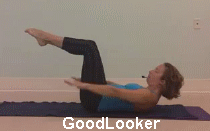
2. Crunch (Twisting)
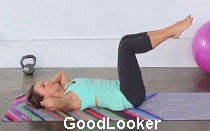
3. Reverse Crunch (Reverse twisting)

4. Leg Extension

5. Leg Changes

6. Side Crunch (Twisting to the side)
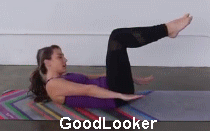
7. Twist Crunch

8. Single Leg Stretch

9. Straight-Leg Stretch

10. Russian Twists (Turns of the body)

11. Side Heel Reaches

12. V-Crunch

13. Bird Dog (Rise of arms and legs on all fours)

14. Lower Back Extension (Hyperextension)

15. Lower Back Letter ‘T’
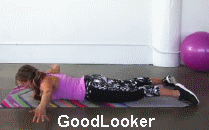
16 Swimming

1.Bridge( Glute Bridge)

2. Leg Raise Bridge

3. Donkey Kick (Rise of the legs on all fours)

4. Clam (Diamond Leg Raise)

Or this option:

5. Side Leg Lift

Or this option:

6. Inner Leg Lift (Inner Leg Lift)

7. Kneeling Side Kicks

Exercises from Pilates for the upper body:
1. Plank (bar)

2. Plank Leg Lift

3. Side Plank Mermaid Raise (Mermaid)

4. Side to Side Plank

5. Upward Plank (Reverse plank)

6. Push-up Knee + Leg Lift

30 Advanced Pilates Exercises
Pilates abdominal exercises and back
1. The Hundred Leg Straight ("Hundred" with a straightened leg)

2. Double-Leg Stretch

3. Double Straight-Leg Stretch

4. Roll-up (Full twist)

5. Sit-up (Torso lift)

6. Rolling Like a Ball (Rolls on the back)

7. Boat (Boat)
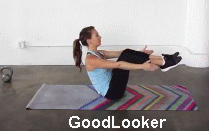
8. Russian Twist Boat

9 Crisscross (Bicycle)

10 Scissors
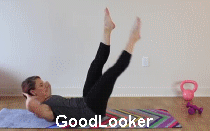
11. Leg Circles

12. Side Jackknife (Side Fold)

13. Lift Crisscross Leg

14. Superman (Superman)

15. Advanced Swimming

Pilates exercises for legs and buttocks
1. Bridge One Leg

2. Bridge Circle Leg

3. Toe Bridge
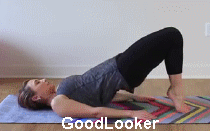
4. Donkey Leg Circle

5. Front Kick Leg (Mahi leg on the side)

6. Closing Leg

7. Leg Circles Circular movements foot on back)

8. Leg Pulses

9. Saddlebag Shaver

Pilates upper body exercises
1. Push-up (Classic push-up)
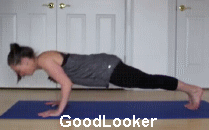
2. Down dog + Push up

3. Knee to Inside Elbow Plank

4. Side Plank Leg Lift

5. Side Plank Crunch

6. Side Plank Oblique Twists

7. Plank Leg Pulse

Thank you youtube channels for the gifs: The Live Fit Girl, Kathryn Morgan, FitnessType, Linda Wooldridge.
Just starting out with Pilates? Then we offer you ready plan classes with basic set simple exercises from Pilates ! If any exercise is not working for you or makes you uncomfortable, skip it or modify it to an easier version.
- The Hundred (Hundred): 30 seconds
- Crunch (Twisting): 15 times
- Leg Changes: 15 reps per leg
- Single Leg Stretch: 10 reps per leg
- Lower Back Letter 'T' (Rise with arm extension): 10 times
- Swimming (Swimming): 10 times on each side
- Bird Dog (Rise of arms and legs on all fours): 10 times on each side
- Bridge (gluteal bridge): 15 times
- Donkey Kick (All-Four Leg Raise): 15 reps per leg
- Clam (Diamond Leg Raise): 15 reps per leg
- Side Leg Lift: 10 reps per leg
- Inner Leg Lift: 10 reps per leg
- Plank (bar): 30 seconds
- Side Plank Mermaid Raise (Mermaid): 10 times on each side
- Upward Plank (Reverse plank): 10 times on each leg

The word "Pilates" is probably known to people who seek to bring the figure into perfect condition. The rest could see him on the signs of various sports clubs and fitness centers.
What is this very Pilates, what is the essence of the exercises, how do they help to lose weight and is it necessary to sign up for classes with an instructor, or can you practice at home, at a convenient time and in comfortable conditions? About all this will be discussed below.
Close acquaintance with Pilates
The complex got its name from the name of its creator, the German Joseph Pilates. Being a rather weak child, he made a lot of efforts to improve his own health.
A system of exercises that combined elements of yoga, gymnastics and stretching, he developed after the First World War.
The main goal of Pilates is not to burn as much energy as possible during each workout, but strengthen joints, ligaments, muscles, increase body flexibility. That is why those who have lost weight “on Pilates” are easily recognizable by their graceful figure and slender silhouette.
Benefits of Pilates

If you decide to master this technique, it is best to start classes with trainers, for example, by familiarizing yourself with the complex developed by Svetlana Gudima, a fitness instructor, Pilates trainer.
But if this is not possible, you can also use video tutorials. But at the same time, remember the basic rules:

Types of Pilates

Are you interested in Pilates as a weight loss program? Then you should learn more about its basic principles, get acquainted with the advantages and disadvantages of such a complex.
All these nuances are described in the corresponding article.
Please note that Pilates, like any other physical activity, There is certain contraindications- they will also be discussed in this material. After reading it, you will be able to understand whether such exercises are suitable for you, as well as master the basic rules that you will have to follow during training.
Pilates at home - video tutorials
If you decide to practice Pilates at home, carefully watch the video before starting the workout, and only after that proceed with the complex. Do not rush and do not be nervous - not everything can work out the first time.
 Today, you can find a lot of Pilates classes online, or even a trainer who leads workouts online.
Today, you can find a lot of Pilates classes online, or even a trainer who leads workouts online.
But if you want to study exactly when it is most convenient for you and not be “attached” to a certain time, you should give preference to videos - fortunately, they are freely available from domestic coaches, and from overseas Pilates gurus.
If some time ago Pilates with Karen Carter was the most famous, training with which can be found both in the original and in Russian, today the number of “domestic” Pilates videos allows you to choose a video that is suitable for both beginners and those who are already “ on the subject."
We offer a selection of videos that will allow you to master the technique of Pilates. The Pilates instructor will comment on them.
Basics of Pilates with Alena Mordovina
It’s worth starting with an acquaintance with Alena Mordovina, who in the introductory lesson tells what Pilates is and what are its main advantages.
It is worth emphasizing that Alena not only shows the exercises, but also gives recommendations for their implementation. Despite the short duration of the video, during such a workout, the muscles get an excellent load.
Fitness expert commentary:“This video can be taken as a basis for beginners - it fully reflects the essence of Pilates and is an excellent complex that you can handle without risking “earning” muscle pain.
After the body gets used to such a load, you can add exercises. This will make the workout more effective and help you lose weight in a short time.”
Basic Pilates Exercises
Beginners should pay attention to another video on Pilates, which shows the basic exercises of the basic level. Trainers tell in detail not only about the exercises themselves, but also about how to breathe during classes, about the technique for performing the complex.
Fitness expert commentary:“It is worth emphasizing that this video describes in great detail the technique for performing each exercise from the Pilates complex, which is especially important for beginners.
Such video lessons will be a real find for those who do not have the opportunity to train under the supervision of a coach. A positive attitude and the most complete comments - this is what distinguishes this complex.
The proposed exercises involve a large number of muscle groups and allow you to provide the body with sufficient load.
Pilates with Inga Yakhna
Pilates with Inga Yakhna is also known, video tutorials for which are presented below. Inga pays attention to the warm-up, and also shows the technique of performing many exercises that are performed on a gymnastic mat.
Fitness expert commentary:“It is worth emphasizing that Inga is not only a coach, but also a teacher, so her explanations are clear and detailed.
The complex is designed for people who have a certain physical fitness, but the trainer also tells how to simplify some exercises. Such training will allow not only to “hone the figure”, but also to tighten the posture, improve the shape of the legs.”
Video lesson with Olga Yanchuk
To increase flexibility, to make the figure more toned, but not muscular, will allow Pilates with Olga Yanchuk, who in her video lessons focuses on the work of the joints. Of course, this does not mean that the muscles are idle - they also get enough work.
IN modern world, where everyone harbors a desire to be beautiful, it has become not only relevant, but also fashionable to take care of their health and visit Gym or fitness center. Therefore, many beginners, when choosing the optimal direction of sports activity, are faced with the concept of Pilates. This system, which arose not so long ago thanks to Joseph Pilates, combines elements of gymnastics, yoga, fitness and therefore is very popular all over the world. Pilates for beginners is especially in demand, which is explained by the effectiveness of the exercises, the convenience of their implementation in almost any conditions and the lowest risk of injury. And today we will tell you what is the peculiarity of this direction, and what Pilates exercises can be mastered at home.
Pilates is one of the few systems that has a complex beneficial effect on the body, increasing its physical characteristics (flexibility, mobility, plasticity) and allowing you to create an ideal figure.
At  exercises are practiced in almost every fitness center. Therefore, many could see the intimidating-looking Pilates reformer. Undoubtedly, training on such a simulator brings many benefits for human body. However, beginners can start practicing the technique even without the need for special equipment.
exercises are practiced in almost every fitness center. Therefore, many could see the intimidating-looking Pilates reformer. Undoubtedly, training on such a simulator brings many benefits for human body. However, beginners can start practicing the technique even without the need for special equipment.
But before you start classes, you need to know the features of this technique and its basic principles. It is worth noting that the Pilates exercise system was developed by D. Pilates, who personally encountered health problems, as a special therapeutic gymnastics. Therefore, any set of such exercises is designed to get to the deepest and smallest muscles, having carefully worked out each of them.
Regularly practicing according to the method of D. Pilates, you can notice the restorative effect of exercises. In the course of such training, a person becomes more resilient, flexible, plastic, physically toned and slender.
This system is considered unique for a number of reasons:
- allow to strengthen muscle fibers due to their stretching and pumping.
- Training is focused on high-quality and thorough execution of exercises with a small number of repetitions.
- Movements should be soft and smooth, with even breathing.
- The technique is designed in such a way that when performing exercises, all muscle groups are worked out.
- Regular implementation of the complex helps not only improve your health, but also get rid of extra pounds, resulting in a beautiful, toned and slender body.
For those who decide to master this unique practice, the first step is to learn how to perform Pilates lessons for beginners using video instructions. They are specially designed for people with no or minimal sports experience, as well as physical disabilities due to injury or illness.
Where to start for a newbie?
Before starting classes according to the D. Pilates method, it is important to study and take into account the necessary requirements for beginners, which are as follows:
- To perform Pilates exercises for beginners, it is enough to acquire. At first, you can use a regular, but thick towel.
- Schedule a workout in advance, considering that it is not recommended to eat food 1 hour before and after a workout.
- Preferences in clothing should be given to things that do not constrain movement. As for shoes, Pilates exercises are performed barefoot.
- Preview the video tutorial with the complex for beginners to learn the technique and features of each exercise.
- When performing the complex, follow the sequence.
- Pay attention to your feelings, because actions during Pilates should not cause discomfort or pain.
- If you develop a disease during exercise, stop training and consult your doctor.
- Each workout should start with, which lasts from 5 to 10 minutes and includes simple exercises to "warm up" all the muscles in the body.
- Stop exercising at the first sign of fatigue. It is better to continue the lesson later, when the body gains strength to perform the remaining exercises.
Execution features
The features of the exercises include breathing tactics and smooth movements. During Pilates training, it is important to breathe through the chest, while inhaling, taking in air so that the ribs expand. When exhaling, the working muscles should be tried to contract as much as possible.
Control of the abdominal muscles is also a necessary requirement. When carrying out movements, it is important to constantly keep the press in tension, using it as an energy source for the whole body.
And to increase the flexibility of the body, you should try to smoothly stretch the spine while doing exercises. By gradually increasing the distance between the vertebral discs, you can achieve excellent results in the plasticity of the body, as well as strengthening the muscular corset that supports the musculoskeletal system.
First workout
There are about three dozen Pilates exercises for people who are just starting to get acquainted with the system. But in order to master the execution technique and understand the principle of the D. Pilates technique, it is enough to learn how to perform about ten simple exercises that are ideal for the first workout.
You need to start training with a warm-up, as mentioned above. To warm up the muscles, you can perform the following exercises:
- Starting position - lying on your back on the floor. Inhaling deeply, tighten your abs and begin to lift your legs, bending them and pulling your knees to your chest. At the same time, you need to press your legs tightly to the body with your hands, lingering in this position for a few seconds, and then exhale. Remaining in this position, you still need to perform 3 cycles of inhalations and exhalations. It is recommended to do 2 repetitions of the exercise.
- I.p. - the same as in the previous case. With your arms outstretched to the sides, you need to raise your legs bent at the knees so that the thigh and lower leg form a right angle. From this point, legs are simultaneously lowered to the right, then to the left. Straining the press, you need to take deep breaths and exhale, lingering at the top point.
Let's move on to the basics
We will not describe the entire set of Pilates exercises for beginners, but you will find the simplest and most effective of them with phased implementation below.
Hundred (100)
During this exercise, the muscles of the abdominals, neck, upper shoulder girdle, hips and buttocks are worked out. The very name of the exercise comes from the number of respiratory cycles that should be carried out over 10 sets.
Starting position - lying on the floor on your back. Straight arms should be stretched along the body, straight legs tightly pressed to each other, the press is tense, breathing is shallow.
It is worth starting the exercise with the fact that you need to raise your head, hands as shown in the photo. In this position, you should make springy movements with your hands up and down with a small amplitude, inhaling and exhaling superficially 5 times in a row. The total is 10 sets and 100 breaths. 
During this exercise, the abdominal muscles, legs, and back are involved. Additionally, coordination of movements develops and posture improves.
To perform it, you need to sit on the floor on the mat and raise your arms along the body. Rounding your back, shift the center of gravity to the coccyx and lift straight or bent legs. In this position, you need to hold out, balancing only on the coccyx from 10 to 15 seconds. Sets can be performed 9-10. 
Stretching the legs alternately
Stretching the legs alternately allows you to work out straight and lateral muscles press, buttocks, large dorsal muscles. I.p. - Lying on your back. Having connected the legs, they must be torn off the floor by about 40-50 cm, while lifting upper part corps. Tightening the abdominal muscles, pull the bent or straight leg with your hands to the chest, holding it in this position for 10-12 seconds. After returning it to the position on weight, repeat the exercise with the second leg. In total, you can perform from 5 to 10 approaches of the exercise. 
I.p. - the same as in the previous case. Bend your knees and pull them up to your chest to wrap your arms around them. Tightening your abdominal muscles, stretch your legs until they form an angle of 45⁰. At the same time, stretch your arms in the direction opposite to your legs, trying to stretch the spine. Return to starting position. The recommended number of repetitions is 10-15. 
I.p. - bar on the elbows. Take a position so that the body forms a straight line from the base of the neck to the heels. Take a deep breath and at the same time lift your buttocks up while lowering your head down and exhaling. Hold for 5-8 seconds in this position and, having completed another breathing cycle. 
I.p. - Sit on the floor sideways, leaning on your left thigh and straightened left arm. Raise the body up, holding it at the top for 5-10 seconds in tension. At the same time, pull your toes towards you, and look in the direction right hand lying along the body, as shown in the photo. Repeat 8-10 times for each side of this exercise. 
I.p. – Stand up straight against the wall so that your back rests against its surface. Perform squats, trying not to tear your spine and lower back from the wall. Breathing should be deep, not shallow. Perform 10 repetitions for each side. 
I.p. - the same as in the mermaid exercise, but the emphasis is not on the palm, but on the elbow and one knee. From this position, keeping the press in tension, do 10-15 leg lifts up. Switch sides and repeat for the other leg. 
Very effective in improving posture and preventing scoliosis. In parallel, it helps to work out the spinal muscles, abdominal Press, buttocks, thighs and muscles of the upper shoulder girdle. 
To perform this exercise from Pilates, you need to lie on your back and pull up, bending your knees, heels to the buttocks. Putting your hands near your feet, raise your pelvis so that your chest touches your chin. Remember to tighten your abs and breathe evenly. Having lingered at the top point for a few seconds, with an exhalation, return to the SP. Repeat the exercise 10-15 times.
As you can see, Pilates exercises are quite easy to perform. The only difficult moment is the concentration of attention and the need to constantly keep the press in suspense. But believe me, you will cope with this after 2 weeks of hard training. Having mastered First level Pilates, you can begin to practice more complex exercises.




